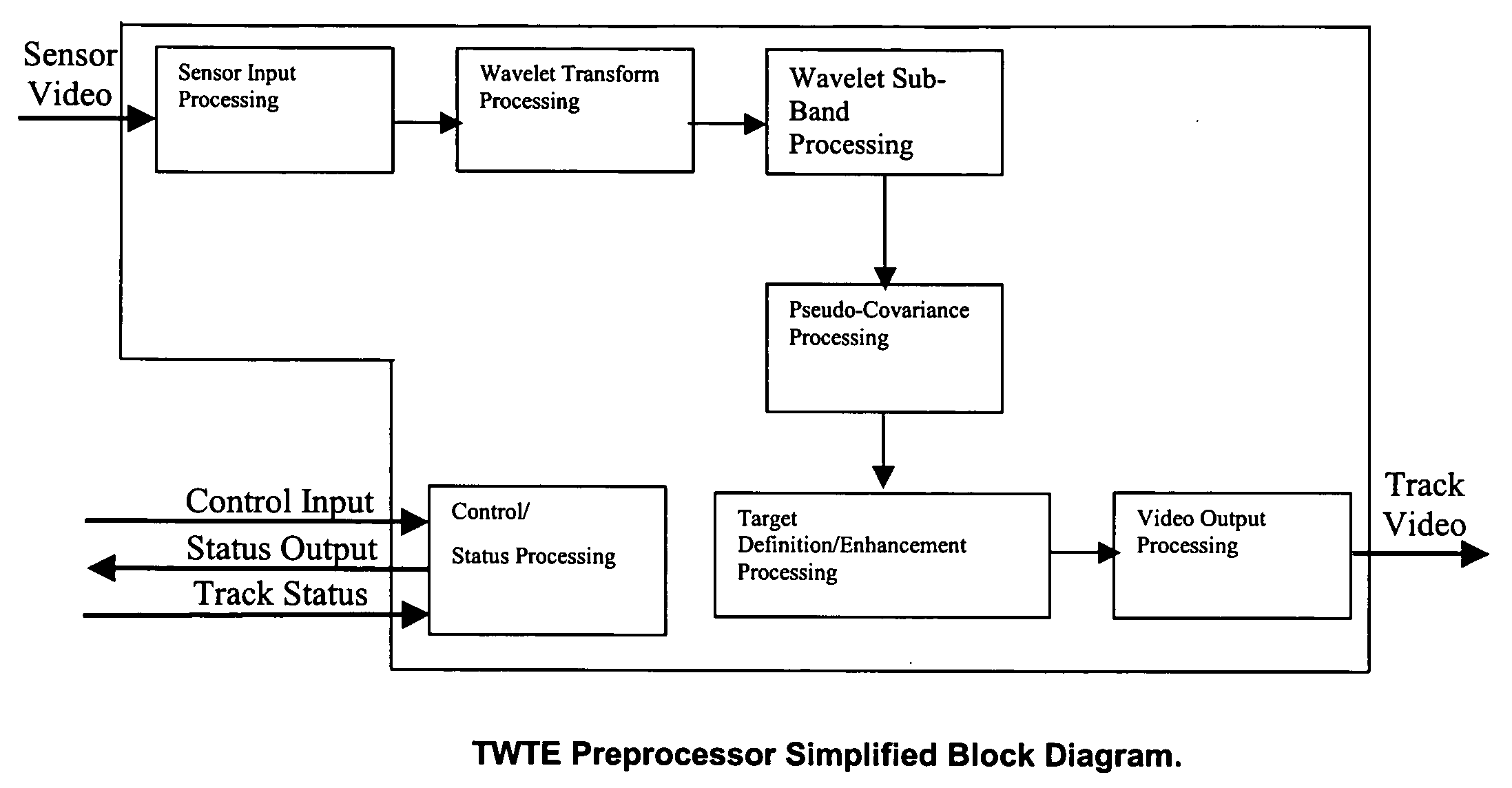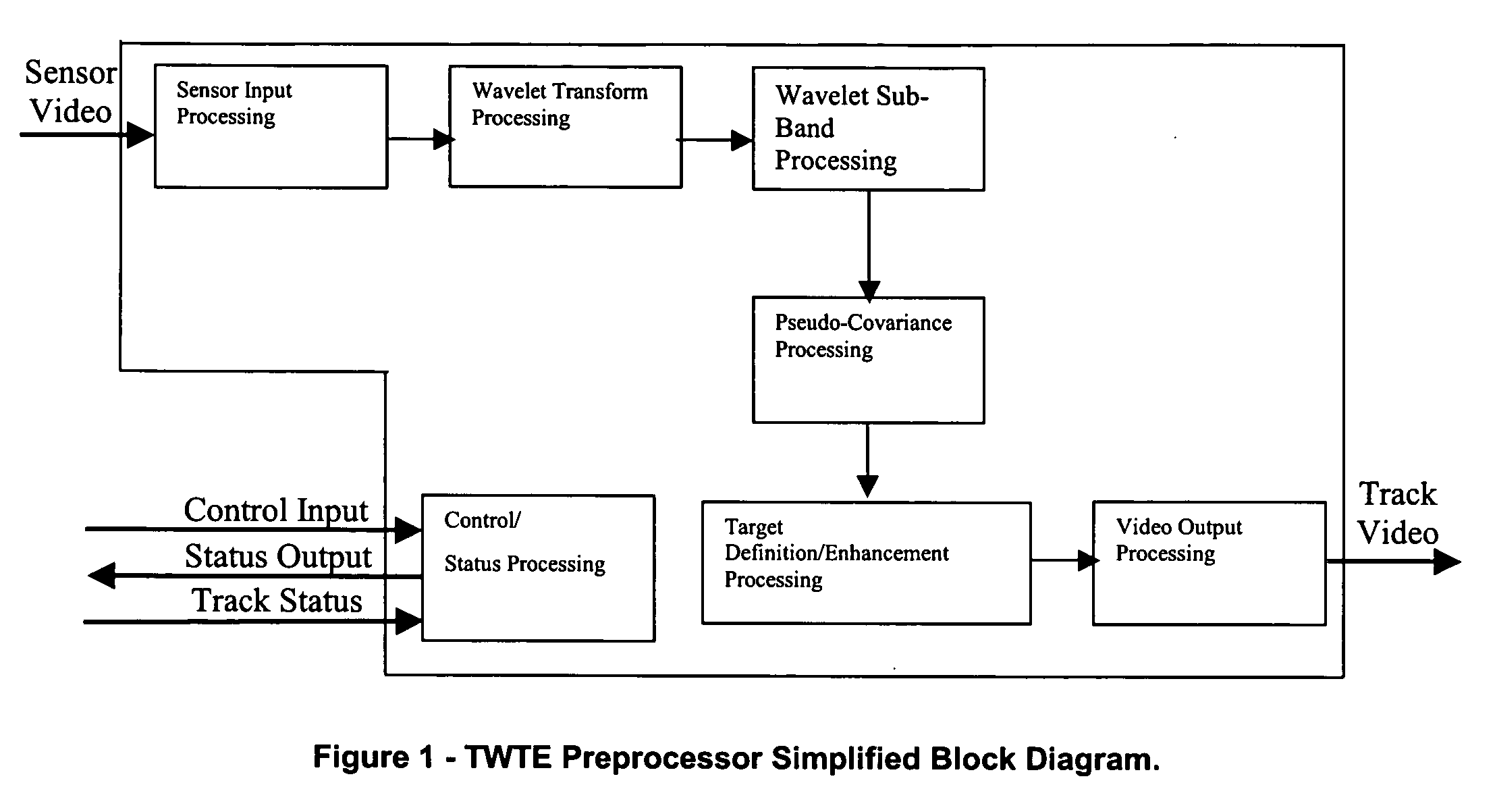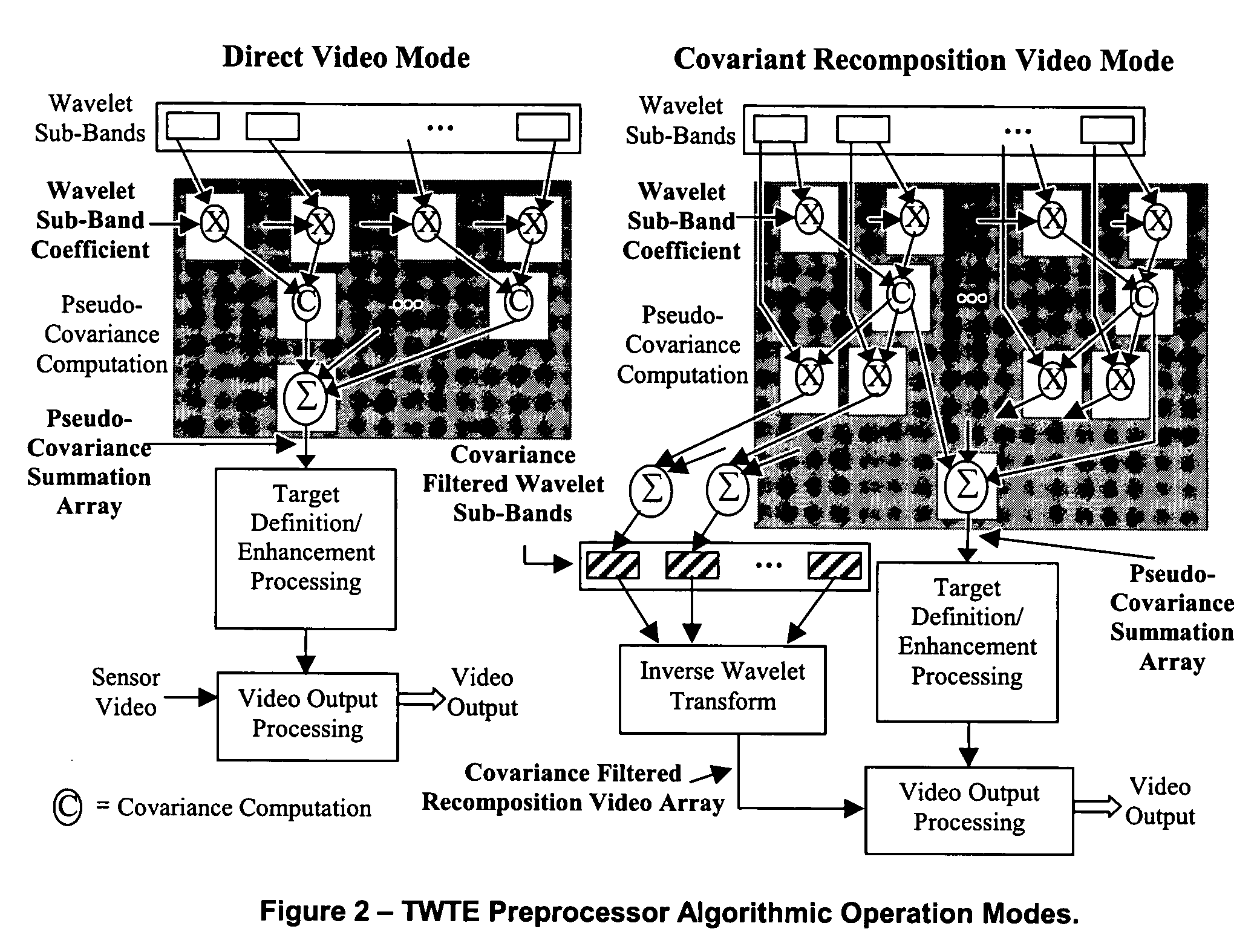Tunable wavelet target extraction preprocessor system
a target extraction and wavelet technology, applied in the field of target tracking system, can solve the problems of ineffective edge trackers for a vast number of scenarios, inability to accurately determine target boundary or shape based on a set of known or unknown conditions, and a large number of scenarios
- Summary
- Abstract
- Description
- Claims
- Application Information
AI Technical Summary
Benefits of technology
Problems solved by technology
Method used
Image
Examples
Embodiment Construction
[0148] The TWTE Preprocessor of the present invention is composed of seven (7) subfunctions, all explained in detail below: [0149] a) Control / Status Processing [0150] b) Sensor Input Processing [0151] c) Wavelet Transform Processing [0152] d) Wavelet Sub-Band Processing [0153] e) Pseudo-Covariance Processing [0154] f) Target Definition / Enhancement Processing [0155] g) Video Output Processing
[0156] A simplified Block Diagram is shown in FIG. 15. These subfunctions interface to provide the total functionality of the TWTE Preprocessor. Externally, the TWTE Preprocessor interfaces to a Sensor, a Track Processor, and a manual or automatic control process.
[0157] All or any of the functions depicted in the Simplified Block Diagram may be implemented in hardware, software, or firmware, dependent upon scenario, speed, cost, and physical requirements.
Modes of Operation:
[0158] The TWTE Preprocessor is capable of two modes of operation: Direct Video Mode and Covariant Recomposition Video M...
PUM
 Login to View More
Login to View More Abstract
Description
Claims
Application Information
 Login to View More
Login to View More - R&D
- Intellectual Property
- Life Sciences
- Materials
- Tech Scout
- Unparalleled Data Quality
- Higher Quality Content
- 60% Fewer Hallucinations
Browse by: Latest US Patents, China's latest patents, Technical Efficacy Thesaurus, Application Domain, Technology Topic, Popular Technical Reports.
© 2025 PatSnap. All rights reserved.Legal|Privacy policy|Modern Slavery Act Transparency Statement|Sitemap|About US| Contact US: help@patsnap.com



